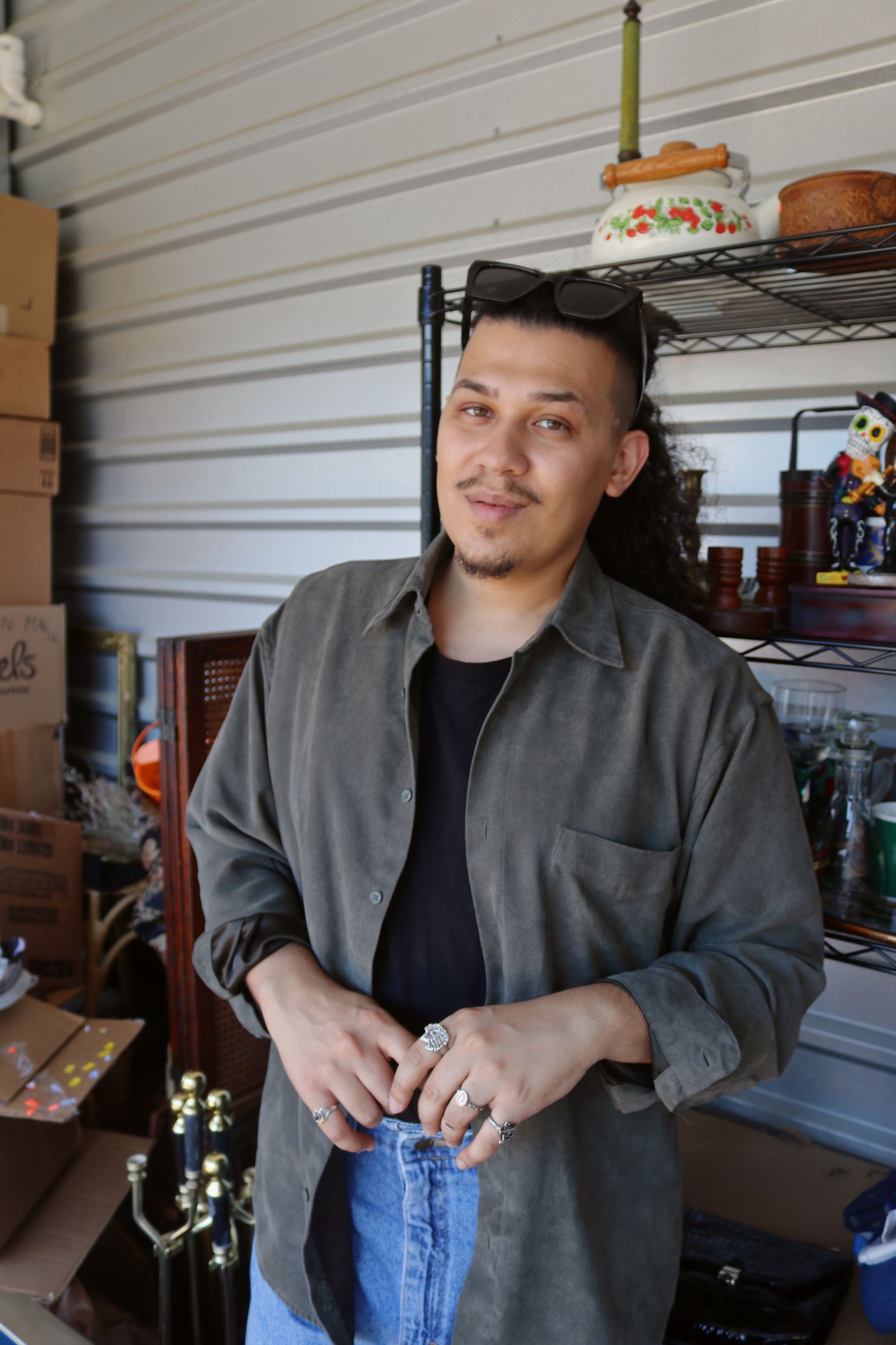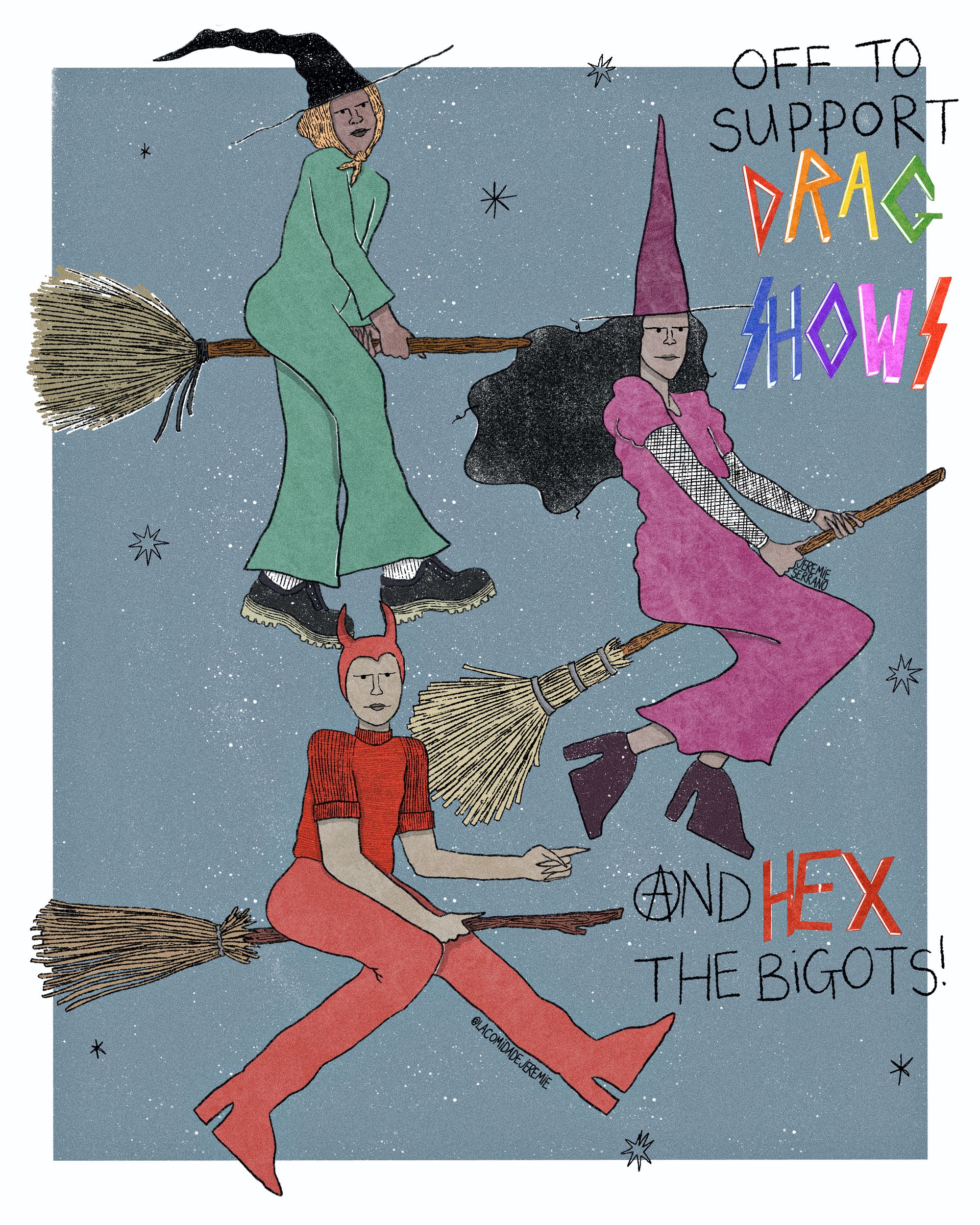Thrifting has a diversity problem. Despite its positive environmental effects, the rise in popularity of thrifting amongst Millennials and Gen Zers has uncovered some of its shortcomings, including the lack of inclusivity of people of color in many vintage, resell, and antiquing spaces.
Artist and antiques dealer Jeremie Serrano (he/him) knows this all too well. “There aren’t a lot of people of color in the space of antiques and vintage dealing,” he said. “It’s not inviting.”
So earlier this year he decided to do something about it by expanding his art and vegan recipes brand, La Comida de Jeremie, to source and sell antiques inspired by his Puerto Rican heritage and love of Halloween.
With the goal of making antiquing more inclusive to people of all backgrounds and bank accounts, Serrano spoke to Queerency about how his mother inspired his love of thrifting, the joy of Spooky Season, and creating community in antiquing.
Queerency: Can you tell me about your antiques business and what led you to start it?
Jeremie Serrano: This has been a long-term dream of mine ever since I was in middle school. I grew up with limited resources––after my parents divorce, my mom was technically a single mom who worked her butt off doing her side hustles while working full-time––so a big part of what we did on the weekends growing up in New England was going to tag sales, yards sales, Goodwill, and other thrift stores to find really good deals. So that’s where my passion for antiques came from––just shopping with my mom on the weekends.
I’ve just kind of gathered a collection of antiques for my life and my home, and every time I would share my thrift hauls on social media, people would message me saying things like, “I love your style. I wish you could decorate my house.”
I had always had the dream to have a brick-and-mortar store or thrift store, but it occurred to me that I’m already selling my art online and I ship things every week to customers––why can’t I do the same thing with antiques?
So a few months ago, I started collecting things to decorate people’s homes. People would tell me that they love how I decorate my house, but they live in rural areas where there are not that many good options to thrift; and when they do buy online, it’s kind of expensive. So I started brainstorming, “What can I do?” And so that’s where the idea for the antique store was birthed.
The other part was that I wanted to be able to offer options for people who were lower income, like how I grew up, because I know what it’s like to go into a store and get a good deal for something that is antique. And so I thought, “How can I do that in a way where I’m still earning money, but then also giving that access to the people who want these things. So that’s where all my interests started with this business.

Queerency: From the outside looking in, the antiquing space doesn’t feel very inclusive of people of color, queer folks, or even people on a budget. Is that your experience?
Jeremie Serrano: I agree with everything you just said. When I first moved to Memphis and started thrifting, and also more recently as I’m visit estate sales and antique malls in the area, I run into [racist trope collectibles] like the Mammy dolls, or I’ll have white people watching me shop because I’m a person of color and they think I’m gonna steal. So it’s not inviting, which is another part of why I created this movement of selling antiques because we’re not welcome in this space.
But I love connecting with people on social media. I’m actually friends with a person who runs this page called Veggie Mijas. And so basically what she does is create chapters throughout every state and they’ll host clothing swaps. And so you’ll see people of color and some white folks who come thrift for antiques and clothes.
I think we definitely need to do those things so that people can see that we’re here, we’re a part of this, and we can be invited to these spaces. And if we’re not, let’s make it ourselves.
Queerency: How would you describe your antiquing and thrifting style? What’s your aesthetic?
Jeremie Serrano: Whether you’re looking at my artwork, my food videos, or my antiquing videos, I think you’ll see that I celebrate Halloween all year round. All things spooky and Halloween: 365, 24/7.
I love the Victorian-esque style, but I also love incorporating my Latin culture into that. So I’m always looking for vintage Spanish-style things and things that are related to the diaspora while relating back to that spooky side of myself. I love that gothic antique era, so I’m looking for things like antique gilded mirrors and the most gaudy pieces [I can find]. But then also finding those simpler pieces for folks that do love that spooky side, but don’t want to have bats on their wall and stuff.
So I like mixing all those styles together, but you’ll definitely see the spookiness of it all on everything that I offer on my website.

Artwork and vintage finds at La Comida de Jeremie
What’s your vision for the antique part of your business? Where would you like it to be in the next two-five years?
Jeremie Serrano: I definitely want to grow it. I actually connected with a person on TikTok whose handle is The Buried Witch. She’s Latina as well and also kind of into the spooky aspect like I am, and we were talking about how there aren’t a lot of people of color in the space of antiques and vintage dealing. Something that I admire about her is that she goes to art and craft markets and sells at these big spaces where people of color are not typically invited to or just like not tabling at. So I definitely want to grow this community because I think there are so many of us who love that aspect of reselling or collecting vintage items.
I would like to build that community either in person or through social media. The brick-and-mortar store was a dream for a little bit, but I think in the time of Amazon and after the pandemic, e-commerce is the way to go––especially if you’re trying to reach people who don’t have a way to get to you because they live super far away or in the middle of nowhere. So I just want to offer that to people in different states.

To learn more about Jeremie and to support his work visit his website and follow him on Instagram.




